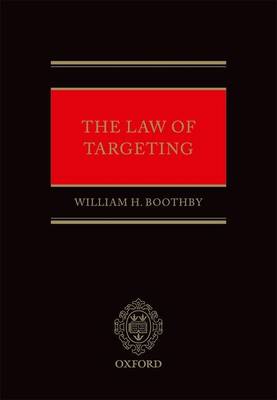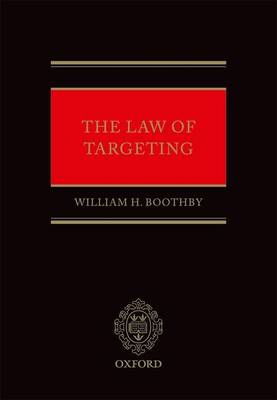
En raison d'une grêve chez bpost, votre commande pourrait être retardée. Vous avez besoin d’un livre rapidement ? Nos magasins vous accueillent à bras ouverts !
- Retrait gratuit dans votre magasin Club
- 7.000.000 titres dans notre catalogue
- Payer en toute sécurité
- Toujours un magasin près de chez vous
En raison de la grêve chez bpost, votre commande pourrait être retardée. Vous avez besoin d’un livre rapidement ? Nos magasins vous accueillent à bras ouverts !
- Retrait gratuit dans votre magasin Club
- 7.000.0000 titres dans notre catalogue
- Payer en toute sécurité
- Toujours un magasin près de chez vous
271,45 €
+ 542 points
Description
Targeting is the primary method for securing strategic objectives in an armed conflict. Failure to comply with the law of targeting jeopardizes the achievement of those aims. It is therefore essential that all those involved in or studying issues surrounding targeting have an accurate and complete understanding of this area of law. This book offers the definitive and comprehensive statement of all aspects of the law of targeting. It is a 'one-stop shop' that answers all relevant questions in depth. It has been written in an open, accessible yet comprehensive style, and addresses both matters of established law and issues of topical controversy. The text explains the meanings of such terms as 'civilian', 'combatant', and 'military objective'. Chapters are devoted to the core targeting principles of distinction, discrimination, and proportionality, as well as to the relationship between targeting and the protection of the environment and of objects and persons entitled to special protection. New technologies are also covered, with chapters looking at attacks using unmanned platforms and a discussion of the issues arising from cyber warfare. The book also examines recent controversies and perceived ambiguities in the rules governing targeting, including the use of human shields, the level of care required in a bombing campaign, and the difficulties involved in determining whether someone is directly participating in hostilities. This book will be invaluable to all working in this contentious area of law.
Spécifications
Parties prenantes
- Auteur(s) :
- Editeur:
Contenu
- Nombre de pages :
- 600
- Langue:
- Anglais
Caractéristiques
- EAN:
- 9780199696611
- Date de parution :
- 12-10-12
- Format:
- Livre relié
- Format numérique:
- Genaaid
- Dimensions :
- 236 mm x 147 mm
- Poids :
- 1108 g

Les avis
Nous publions uniquement les avis qui respectent les conditions requises. Consultez nos conditions pour les avis.






